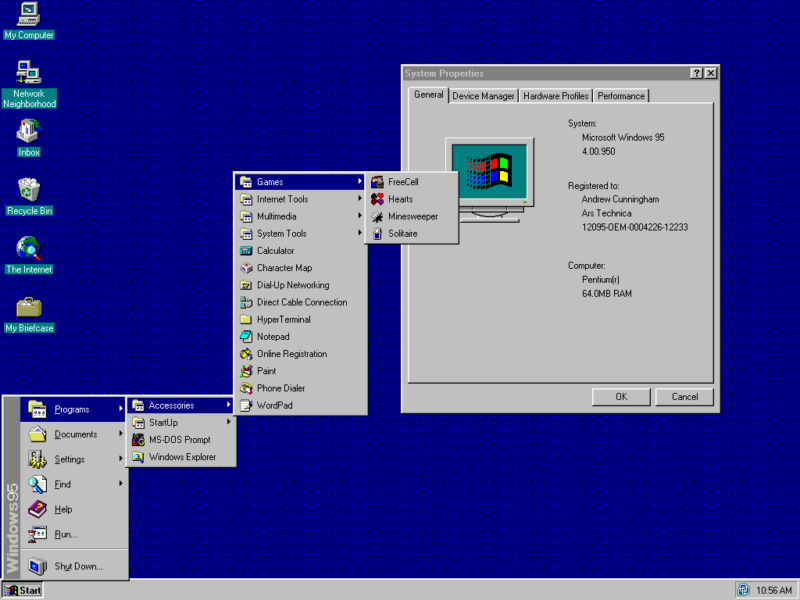
If you have any interest in retro-computing, you know it can be difficult to round up the last official bug fixes and updates available for early Internet-era versions of Windows like 95, 98, and NT 4.0. A new independent project called "Windows Update Restored" is aiming to fix that, hosting lightly modified versions of old Windows Update sites and the update files themselves so that fresh installs of these old operating systems can grab years' worth of fixes that aren't present on old install CDs and disks.
These old versions of Windows relied primarily on a Windows Update web app to function rather than built-in updaters like the ones used in current Windows versions. Microsoft took down the version of the site that could scan and update Windows 95 and 98 sometime in mid-2011. The Windows Update Restored site is a lightly modified version of Microsoft's original code, and the site itself doesn't use any kind of SSL or TLS encryption, so ancient Internet Explorer versions can still access it without modification.
You'll need at least Internet Explorer 5 to access the Windows Update Restored update sites; that browser is no longer available directly from Microsoft, but the Windows Update Restored site offers download links to IE5 and IE5.5 in all supported languages.
Version 3.1 of the Windows Update Restored site—the only one currently functioning, though support for others is planned—supports Windows 95, both editions of Windows 98, NT 4.0, ME, and some versions of Windows 2000 (but not the newest version, with Service Pack 4 installed). If you're using an early-2000s Windows version like 2000 or XP, a similar project called Legacy Update might be a better choice. Windows 2000 and XP updates are still available from Microsoft's Update Catalog, and Legacy Update simply allows those older operating systems to communicate with the company's modern websites and servers.
A straightforward reimplementation of Windows Update is useful for retro-computing enthusiasts who want to download bug fixes while keeping their systems historically accurate. "Unofficial service packs" exist in various forms for all of Microsoft's old operating systems, but they're usually packaged with "helpful" modifications that can extend old operating systems' capabilities but also introduce their own bugs and vulnerabilities.
It should go without saying that even a functioning version of Windows Update doesn't make any of these operating systems safe to use on the modern Internet. Updates for Windows 95 stopped in 2001; Windows 98 and ME stopped getting new updates in 2006. The existence of a functioning update site doesn't change the age of the updates available. Modern browsers, antivirus products, and other software stopped supporting these OSes years ago, and they're best used for non-Internet-connected things like playing games, interfacing with legacy hardware, and strolling down memory lane. Some outfits, like Nixsys, are still selling new systems powered by old components, specifically for running old versions of MS-DOS and Windows.
reader comments
113